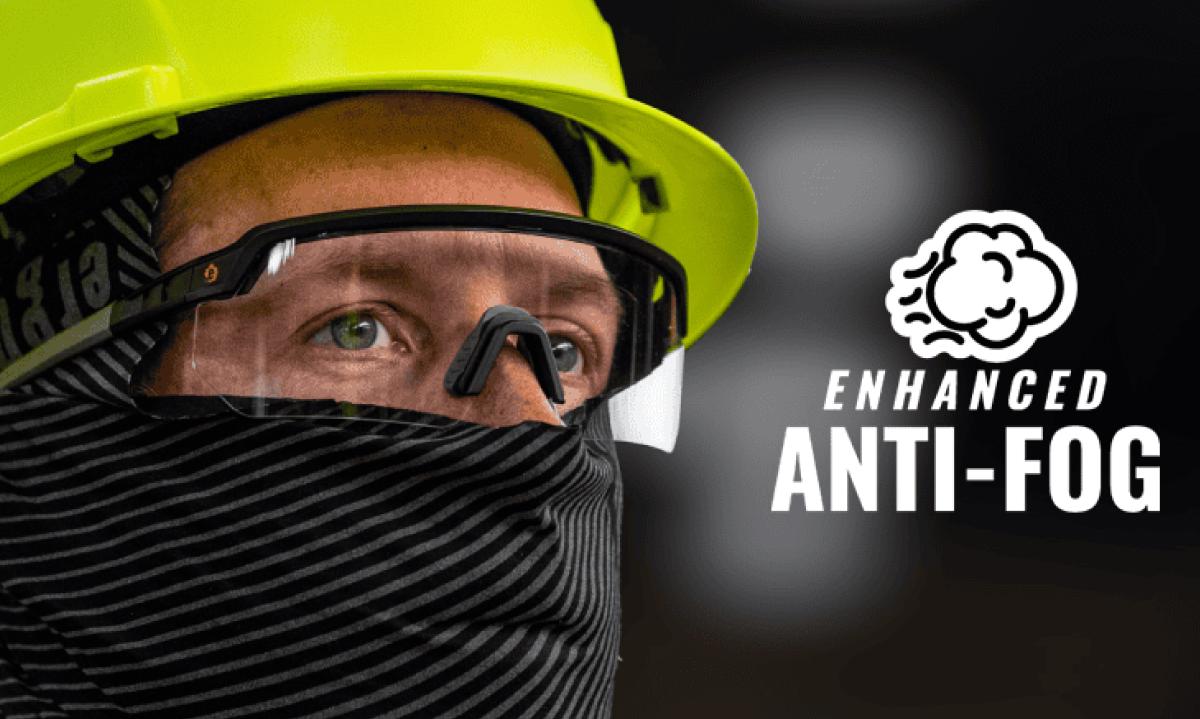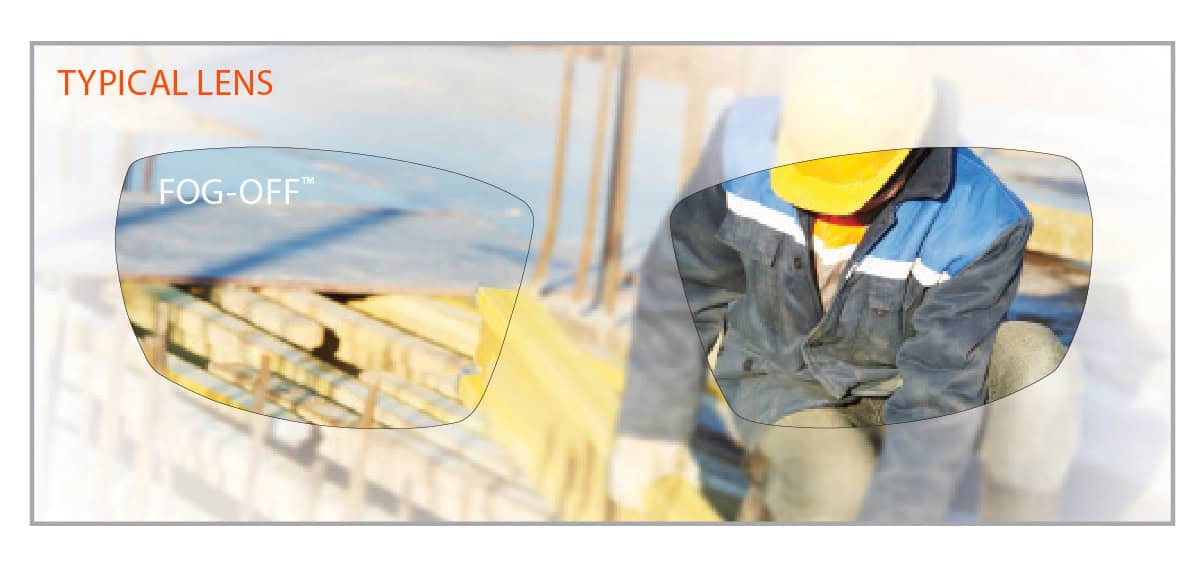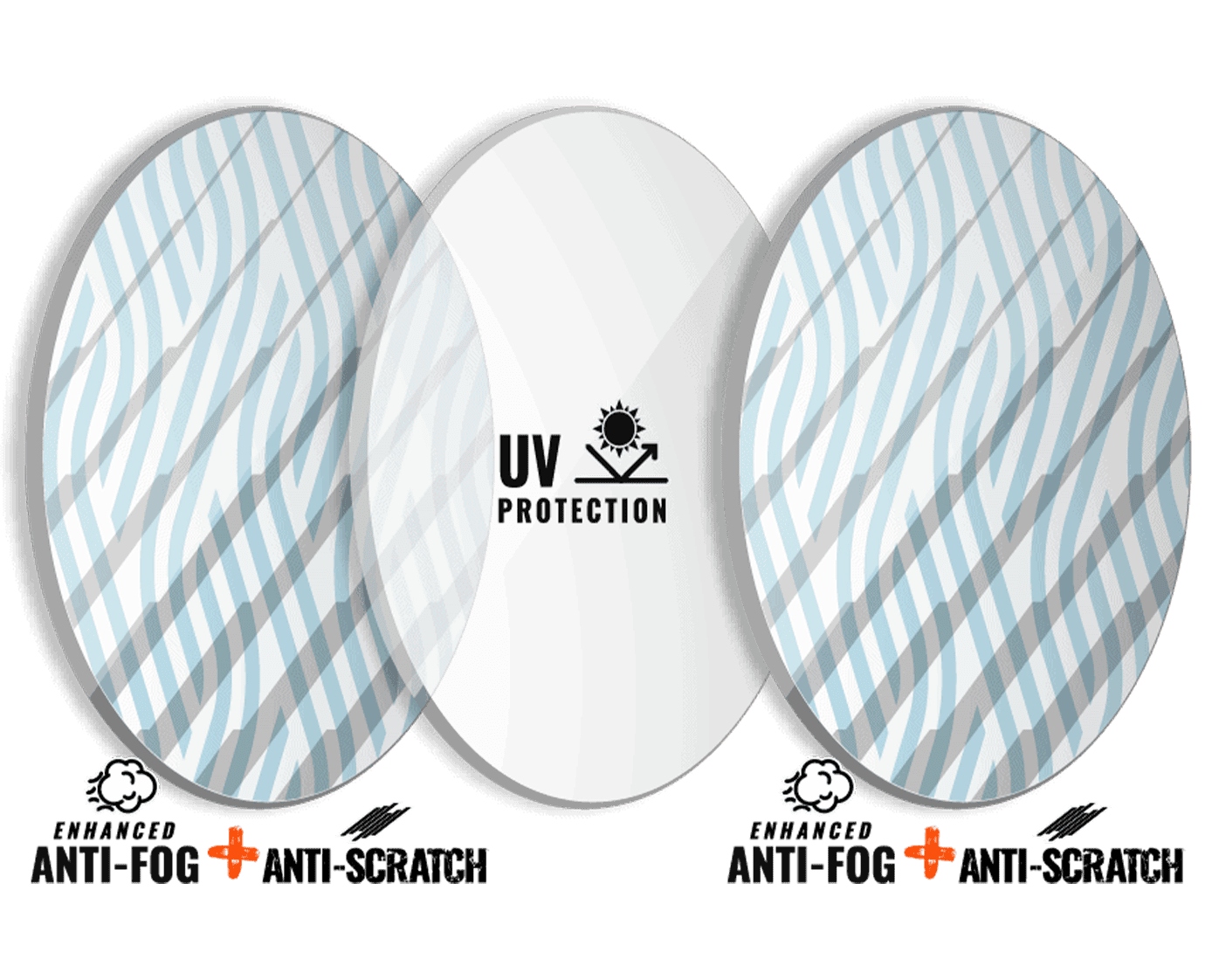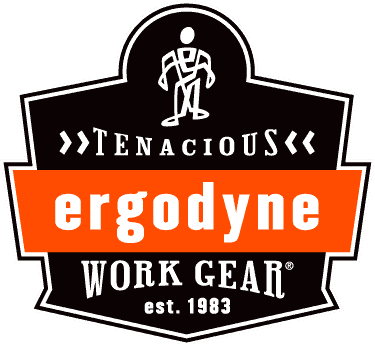Hazed and Confused: The Value of Anti-Fog Safety Glasses Technology [UPDATED October 2024]

The reason workers, specifically those at-risk for suffering an eye injury, stop wearing required safety glasses may seem, well, a bit foggy.
Safety glasses that fog up—or more precisely, glasses exposed to condensation due to humidity or a rapid change in air temperature—can frustrate workers who are required to wear protective eyewear on the job.
Occupational Health and Safety (OHS) data cited in a 2009 study in Accident Analysis and Prevention Magazine indicates that construction, manufacturing, service and retail workers often refuse to wear their safety eyewear because of fogging.
WHAT CAUSES GLASSES TO FOG UP?
- Level of ambient heat in the work environment
- Increases or changes in humidity and moisture in the air
- Lack of air flow caused by tight-fitting eyewear
Even in cold weather, the temperature variance between a worker’s heated, sweating body and the frigid outdoor air can produce the condensation that causes fogging. To avoid having to deal with this, workers may remove their safety eyewear to wipe them dry, or even worse, stop wearing them entirely to avoid obscured vision. Now there’s a risk of injury for two reasons – non-compliance and fogging.

But There Is Good News: Anti-Fog Technology Exists
Safety eyewear that incorporates anti-fog technology can significantly decrease eye injuries by reducing or eliminating fog/condensation and providing the worker with a consistently clear view. This increases compliance and eliminates the need to constantly remove and wipe the glasses, boosting both safety and productivity. With the anti-fog technology available today, fogging should become a thing of the past for workers in these tough work environments.
NOT ALL ANTI-FOG TECHNOLOGIES ARE CREATED EQUAL
Still, not all anti-fog technologies are created equal. Many safety glasses feature anti-fog coatings that are a topical treatment to the lens’ surface, often applied via an anti-fog wipe or other temporary solutions. However, such coatings can have a limited life span, with the potential to wash off after only a brief time worn. Anti-fog treatments are most effective when they are applied during lens manufacturing and permanently bonded to the lens material. An example is Ergodyne’s Skullerz Enhanced Fog-Off + Technology that will not wash or wear off after long-term use, combatting fogging and scratches, even in extreme temperatures.

Ergodyne’s Fog-Off+ Technology combines durable scratch-resistance and enhanced anti-fog performance for clear viewing no matter the job—particularly useful for those working with dust masks or in extreme temperature change. Plus, UV protection to filter 99.9 percent of harmful UVA, UVB and UVC rays.
Understanding how the anti-fog technology is applied is critical to properly evaluating and making purchasing decisions on anti-fog safety glasses.
VENTILATION FOR INCREASED VISIBILITY
Beyond anti-fog lens technology, glasses that also incorporate integrated ventilation allow airflow throughout the glasses, which works to reduce fogging on lenses during work. Reducing the speed and frequency at which safety glasses fog allows for increased visibility, in turn yielding less injuries and greater productivity. Adding ventilation technology to the glasses creates another layer of protection, doubling down on fog-fighting performance.
CHOOSING THE BEST ANTI-FOG SAFETY GLASSES
Wearing anti-fog safety glasses where changing temperatures and humidity are a daily reality can help improve worker safety and workplace compliance. It’s an effective way to reduce fog and promote good vision. When selecting eyewear making anti-fog claims, look for technologies that are permanently bonded to the lens for the best anti-fog performance that won't wash or wear off.
To learn more about Skullerz Enhanced Anti-Fog Technology, be sure to check out our Skullerz Eyewear Technology Page.
FAQ
Anti-fog technology works by applying a special coating or treatment to the lenses of safety glasses or goggles. This coating reduces surface tension on the lens, causing tiny water droplets to spread into a thin, clear layer rather than forming larger droplets that obstruct vision. Some coatings actively absorb moisture, while others create a hydrophobic barrier that minimizes fogging. The goal is to maintain a clear view in conditions where temperature changes, humidity, or exertion would otherwise cause fog to form on the lenses.
The longevity of anti-fog technology on safety glasses or goggles depends on factors such as the quality of the coating, the frequency of use, and the cleaning methods used. High-quality anti-fog coatings can last several months to over a year with proper care. However, aggressive cleaning, exposure to harsh chemicals, or abrasion can reduce its effectiveness over time. Reapplying anti-fog solutions periodically or using products with permanent anti-fog coatings can help extend the technology’s lifespan.
- Rinse with Water: Gently rinse the lenses with lukewarm water to remove dust, dirt, or debris that could scratch the coating.
- Use a Mild Soap: If needed, use a small amount of mild, non-abrasive soap to clean the lenses. Avoid harsh chemicals, as they can degrade the anti-fog coating.
- Pat Dry with a Soft Cloth: Use a clean microfiber or soft cotton cloth to pat the lenses dry. Avoid rubbing, as this can damage the coating.
- Avoid Paper Products: Do not use paper towels, tissues, or other abrasive materials that can scratch the lenses.
- Store Properly: Keep your glasses or goggles in a protective case when not in use to prevent damage to the lenses.

